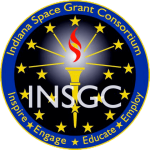Space Technology Mission Directorate
About Us
Technology drives exploration and the space economy. NASA’s Space Technology Mission Directorate (STMD) aims to transform future missions while ensuring American leadership in aerospace. As NASA embarks on the next era of space exploration with Artemis, STMD is advancing technologies and testing new capabilities at the Moon. Many of the same systems will prove critical at Mars. STMD’s portfolio spans a range of discipline areas and technology readiness levels.
STMD bolsters and funds diverse ideas from entrepreneurs, researchers, and innovators across the country. Space technology research and development occurs at NASA centers, universities, national labs, and small businesses. STMD leverages partnerships with other government agencies and commercial partners to quickly advance and demonstrate cross-cutting capabilities.
Investments in revolutionary, American-made space technologies provide solutions on Earth and in space. We make our innovations available to commercial companies to generate real-world benefits – everything from creating jobs to saving lives. Learn more about NASA technology transfer.
See our current and upcoming solicitations webpage for the latest opportunities to work with STMD.
STMD Solicitations and Opportunities
This page provides information about ways to engage with STMD through current and forthcoming solicitations or opportunities. Please also view STMD’s Tipping Point and Announcement of Collaboration Opportunities page.
To see what STMD opportunities might be best suited for you, visit TechPort: https://techport.nasa.gov/opportunities/stmd
Open Solicitations and Opportunities
NASA Innovative Advanced Concepts (NIAC) Phase III
Mandatory Preliminary Proposals Due: March 8, 2023
Final Proposals Due: May 17, 2023
University Smallsat Technology Partnership (USTP) Appendix – 2023
Mandatory Preliminary Proposal Due: May 16, 2023 (5:00 p.m. Eastern)
Full Proposal (by invitation only): July 18, 2023 (5:00 p.m. Eastern)
NASA Innovation Corps Pilot
Next deadline for review: May 19, 2023
Subsequent deadlines for review: Forthcoming in the ROSES-2023 appendix
Early Stage Innovations 2023
Notices of Intent Due: June 7, 2023
Proposals Due: July 6, 2023
TechFlights: Technology Advancement Utilizing Suborbital and Orbital Flight Opportunities
Mandatory Preliminary Proposals Due: June 7, 2023
Final Proposals (by invitation only) Due: October 4, 2023
Through TechFlights, researchers from U.S.-based industry, academia, and private research institutions can receive a grant or cooperative agreement of up to $1 million to test technologies on commercial suborbital vehicles or orbital platforms that can host payloads.
Future Solicitations and Opportunities
**Upcoming solicitation release dates are pending and are subject to change**
NASA SBIR/STTR Solicitations
The NASA SBIR and STTR Phase I solicitations are open to small businesses with 500 or fewer employees. To apply for an STTR, a small business must partner with a non-profit research institution such as a university or a research laboratory. SBIR Phase I contracts last for six months and STTR Phase I contracts last for 13 months, both with a maximum funding of $150,000.
Phase II solicitations are not released publicly; the solicitations are sent directly to Phase I awardees as they are the only ones eligible to apply. SBIR and STTR Phase II contracts last for 24 months and have a minimum funding amount of $850,000. Proposals are due 60 days before the Phase I period of performance ends.
NASA Innovative Advanced Concepts (NIAC) 2024 Phase I Call for Proposals – June 2023
The NIAC program supports visionary research ideas through multiple progressive phases of study. Phase I studies are nine-month efforts to explore the overall viability and advance the technology readiness level (TRL). Eligible recipients of Phase I awards can propose for a follow-on Phase II study.
Space Technology Research Institutes (STRI) Solicitation – May/June 2024
The goal of the Space Technology Research Institutes (STRI) is to strengthen NASA’s ties to the academic community through long-term, sustained investment in research and technology development critical to NASA’s future. The STRIs will enhance and broaden the capabilities of the Nation’s universities to meet the needs of NASA’s science and technology programs. These investments will also create, fortify, and nurture the talent base of highly skilled engineers, scientists, and technologists to improve America’s technological and economic competitiveness.

